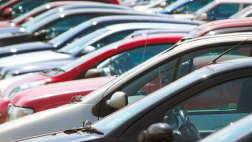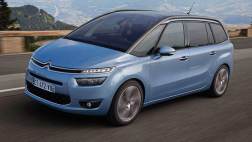This year marks both the 100th birthday of the Mini’s inventor, the late Sir Alec Issigonis, and the launch of what BMW like to depict as the latest incarnation of the small, but perfectly formed, Mini that first appeared in 1959.
In 2001, BMW did its Dr Frankenstein thing with the moribund marque that had little more to offer its fanatical devotees than heritage and memories of The Italian Job.
By contrast, the wholly New Mini – as it was called – offered faddists a package of German engineering; though it also "inspired" the blandest movie remake of the early millennium.
With the arrival of generation two (that’d be the "new New Mini", then), the nameplate has not only survived the novelty of the retro auto movement it embodied, but has thrived to the extent of contributing 15 per cent of the BMW group’s global sales.
BMW call its only front-wheel-drive the "only premium small car". You might wonder how certain other top end Euro hatch makers would respond, but it’s true that nothing else is quite the same.
The hatches to which Mini is predictably compared are go-fast versions developed from humble shopping trolleys, whereas a Mini has no utilitarian relative. Yes, there are variants of more or less power, but in the main, a Mini is a Mini.
It exists for no other reason than to provide buyers with a style statement that’s tolerably entertaining to drive and it has worked to the extent that 80 per cent of owners are new to the BMW group.
Half of them are expected to buy another Mini and half of these in turn will go for the upper spec and quite quick Cooper S that’s been shown to the world’s media in Barcelona over the past fortnight.
It goes on sale in Australia early in the second quarter of 2007, alongside the atmo "S-less" Cooper with diesel and convertible versions to come later.
For now the current model rag top will continue to be produced with the new line of hatches.
"We wanted to launch with a bang," said a Mini man by way of explanation for their being no base models available when we visited Catalonia with the first wave of media to meet the new Cooper S. It wouldn’t want to be a squib then ...
The immediate impression of the mass of gaily coloured Coopers arrayed by Barcelona’s Olympic Canal awaiting rapid deployment through the winding roads of the region is of change so subtle it is almost invisible. By third or fourth glance, though, these enhancements are telling and effective.
Sixty millimetres longer than the previous model, its wheels are set far forward and back for longest possible footprint and scarcely an overhang.
This works within to the extent that my average height co-driver could sit behind my above-average height driving position. Well, sort of - deep inserts in the back of the front seats removed the need to hug his knees while I could just about steer.
Of more relevance than irksome practicalities, are the cosmetic options. I mean, this is Mini, right? With 319 exterior variations and 372 inside, Mini claim a theoretical total of (ahem) 15,000,000,000,000,000 trim combinations.
While it’s all I can do to type that, they seemed quite straight-faced about it. Whatever, it’s unlikely you’ll see two Minis of identical trim and spec.
Circularity is the dominant design motif; from the headlights that are now built into the body rather than the pedestrian-yielding bonnet, up to and including the huge kitchen clock-like speedo and disc-shaped ignition device that slides into the dash beneath the start/stop button.
The Mini would do nicely for the fashion distracted DINK couple who find their nest filling and so need to replace their MX-5, that relatively affordable, two-seater style statement par excellence with a not too expensive two plus two. Certainly no-one could accuse them of surrendering to suburban SUV anonymity.
Nor, with the Cooper S’s new blown engine, would they have to wear hairdresser slurs. The need to accommodate BMW’s latest small capacity Valvetronic fours was the primary impetus for developing the second generation range.
While power of the Cooper S’s turbocharged 1.6 is up a mere 3kW to 128 over the old supercharged unit, torque rises a useful 20Nm to 240 with a decidedly juicy 260Nm briefly available under hard acceleration via the overboost function. Progress comes sooo much more readily now, with a lovely fat torque curve that arrives at 1600rpm and lingers until five grand.
If there’s not much on offer after that point, already the Cooper S has gone further and quicker than you would have reasonably expected of a compact but bulky 1130kg package.
The twin scroll turbocharger works seamlessly; turbo lag no more an issue than in the blown 3.0 litre of BMW’s recently released 335i.
A claimed acceleration time of 7.1 seconds for the 0-100km/h will likely be reduced with the introduction of the sports mode that was missing from the launch cars.
As it stands, the Cooper S travels with the assuredness of much larger car.
At almost double Australian legal speeds in fifth on the freeway, it didn’t trouble the rev limiter.
Through the seemingly ceaseless succession of second gear corners of the region’s B-roads, it could keep the company of all but sharpest hot hatches (dynamics will be enhanced by the optional limited slip diff).
Rapid progress feels a bit too remote through the over assisted steering. It’s accurate enough but lacking the tactility to appreciate the Mini’s much vaunted "go kart" feeling.
Torque steer occurs in extremis, but the press on driving impression is one of tractability, controllability and good, clean fun.
Tail action can be provoked with the electronic nannies switched off, though it’s more twitch than a waggle.
Our cars came with the same close ratio six speed manual gearbox that would be great instead of merely very good if the third-to-second down change sprung home more readily.
Don’t take that as definitive; it’s an impression marred by the hamfistedness that comes with only infrequently rowing a left hand drive car.
What would be handy in any configuration, however, is a more amorous driver’s seat; it’s slightly too flat and unsupportive for the more manic moments.
Ride impression also need await local release. The runflats tyres (16-inchers on the conventionally suspended model, 17s with the sport tune) were good enough for first world roads.
While the stiffened suspension offers marginally more grip and power out of corners, we’ll hazard that the softer option will be the choice on Australia’s crap tarmac.
On the basis of our Mini homage to Catalonia, you’d have to say that there remain similar cars that offer either a more focused driving experience (Renaultsport 182) or greater all round ability (Golf GTI). But the great thing is these are just not Minis, and that’s kind of the point of owning one.
Even so, the revitalised Cooper S offers ample substance to supplement its singular style.
Paul Pottinger is a senior roadtester on the CARSguide team, and also editor of the Sunday Telegraph CARSguide. A version of this review, as well as other news, reviews and analysis will appear in the Sunday Telegraph.






















.jpg)

